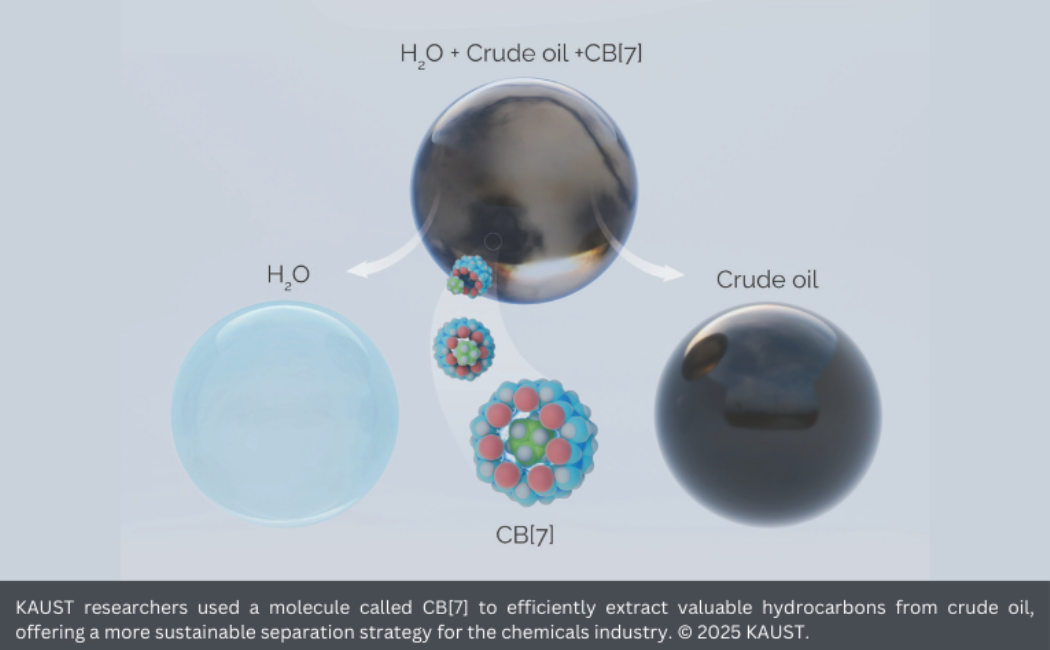Molecular sieves reduce the energy costs of extracting valuable components from crude oil.
Hollow, pumpkin-shaped molecules can efficiently separate valuable hydrocarbons from crude oil, KAUST researchers have shown. These ‘molecular sieves’, known as cucurbiturils, could enable a more sustainable approach to producing raw materials for the chemicals industry.
Crude oil is a complex mixture of hydrocarbons vital for almost every aspect of life, from fuels to plastics. Cyclohexane, for example, is used in nylon production, but isolating it at sufficient purity typically involves multiple energy-intensive fractional distillation steps.
The KAUST team has now developed an alternative separation strategy based on cucurbiturils, named for their resemblance to pumpkins of the plant family Cucurbitaceae. These come in various sizes and have spherical cavities that can trap other molecules.
When the researchers dissolved a cucurbituril called CB[7] in water and mixed it with crude oil at room temperature and pressure, CB[7] pulled cyclohexane and a couple of closely related hydrocarbons into its cavity. The oil and water naturally separated into two layers so that the water could be removed along with CB[7] and its cargo. These hydrocarbons were then washed out of CB[7] using a common solvent.
Because the hydrocarbons and solvent have significantly different boiling points, they could be easily separated through simple and relatively energy-efficient distillation processes. “It requires much less energy than crude oil distillation, which involves many components with similar boiling points and complex interactions,” says Niveen M. Khashab, who led the research.

